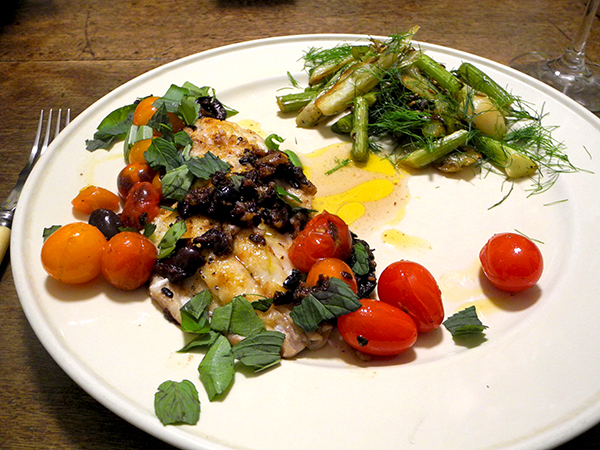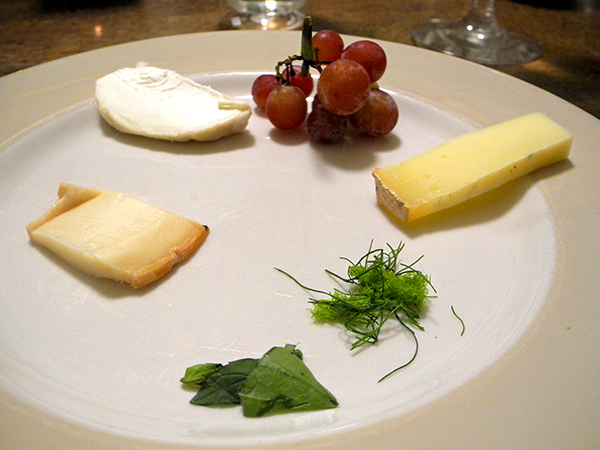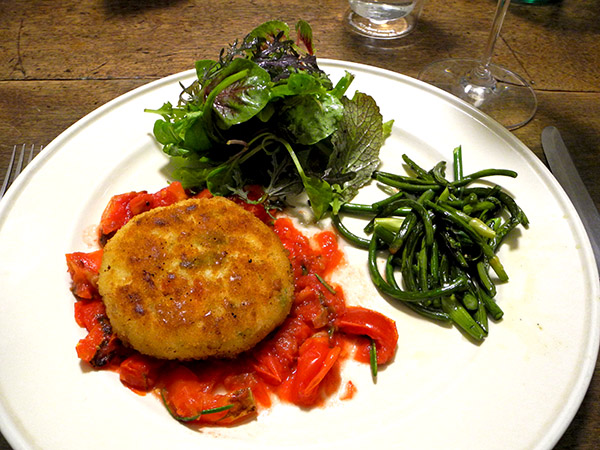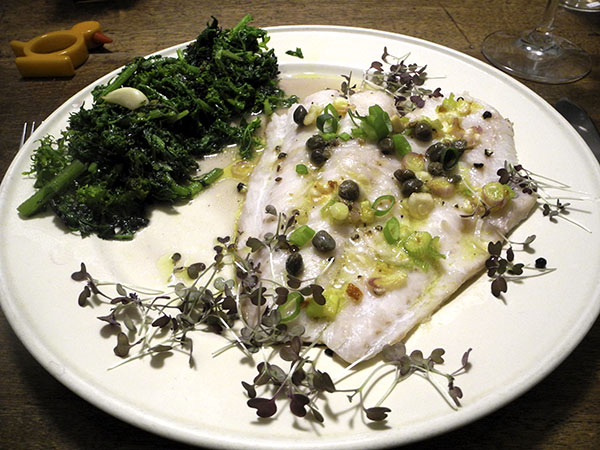
I like the landscaping.
There were two courses. While the the image above is of the second one, I wanted to lead with it rather than with the mackerel toasts, because almost that same appetizer had shown up on this blog only recently.
In the interim I had located some fresh chives, which improves the flavor of the mix, and which I didn’t have when I first whipped up the spread on Saturday. On the other hand, by Monday, when I was ready to serve the rest of it, I had lost my supplies of small greens, so I used a few chive stems as a rudimentary bed.
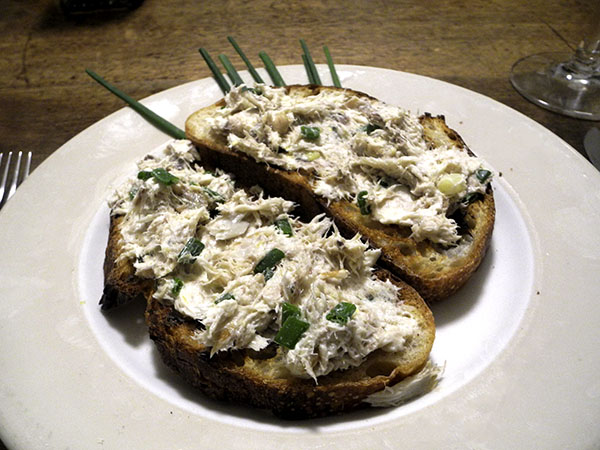
- the remainder of a smoked mackerel spread that had been prepared and served two days before (one 8-ounce smoked whole mackerel from P.E. & D.D. Seafood, skinned, its flesh removed from the backbone and the larger ribs discarded as it was broken up and placed inside a bowl, where it was joined by about a third of a cup of Riverine Ranch water buffalo milk labneh, a tablespoon or more of chopped Japanese scallions, a teaspoon of zest and a tablespoon of juice from an organic Chelsea Whole Foods Market lemon, a little freshly ground black pepper, and a complex powdered Nigerian cayenne, now with the addition of a generous amount of sliced fresh chives from Chelsea Whole Foods Market, swiped onto toasted slices of a sourdough bâtard from She Wolf Bakery, and placed on a few lengths of the same chives, with lemon quarters served on the side
The fish in the main course was not smoked, and in fact it was so fresh that it had almost certainly still been swimming off Long Island when I was originally mixing the mackerel spread 2 days before.
But first a look at my shiny re-tinned au gratin pan, the midwife of the baked pollock entrée.
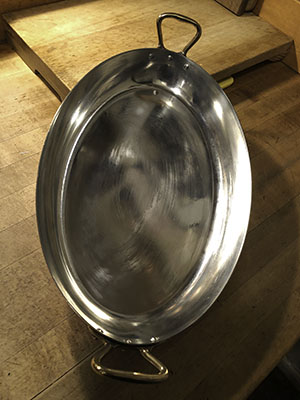
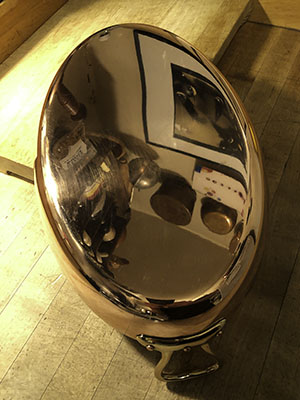
- two pollock fillets (a total of 20 ounces) from P.E. & D.D. Seafood Company, rinsed, dried, seasoned on both sides with salt and pepper, placed skin side down inside a buttered oval newly-retinned copper au gratin pan, dabbed with a mixture of softened unsalted Organic Valley ‘Cultured Pasture Butter’ combined with zest from most of an organic Whole Foods Market lemon, a little chopped ‘music garlic’ from Windfall Farms, slices of a Norwich Meadows Japanese scallion from Norwich Meadows Farm, and part of a piece of a crushed orange/gold home-dried Habanada pepper, also from Norwich Meadows Farm, baked for about 16 or 17 minutes at 350º, removed to 2 plates and kept warm on top of the flat top of the 1936 Magic Chef oven, the little bit of cooking juices that had accumulated poured over the fillets, and a teaspoon or so of Sicilian salted capers, which had just been rinsed, drained, and dried, and heated briefly inside a small antique enameled cast iron porringer in a bit of olive oil, scattered on top of the fillets while the capers were still warm, along with the oil in which they had been heated, the pollock finished with a garnish of micro red mustard from Two guys from Woodbridge
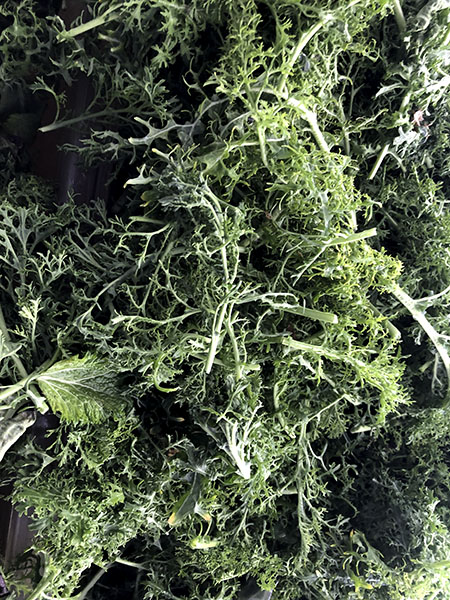
- a handful of beautiful and absolutely delicious ‘frizzy mustard’ greens from Norwich Meadows Farm, barely heated in a little olive oil in which 2 halved cloves of garlic had been allowed to sweat a bit, seasoned with salt and pepper and finished on the plates with a drizzle of olive oil
- the wine throughout was a Spanish (Valencia) white, Celler del Roure ‘Cullerot’ Blanco 2017, from Astor Wines
- the music throughout the meal was a 2001 recording of Gluck’s 1779 ‘Iphigenie en Tauride’ (which fully embodies the composer’s operatic reforms), Marc Minkowski conducting Les Musiciens du Louvre and le Choeur des Musiciens du Louvre, with Laurent Alvaro, Mireille Delunsch, Simon Keenlyside, Yann Beuron, Laurent Naouri, Alexia Cousin, Michèle Norman-Webb, Claire Delgado-Boge, and Nicki Kennedy
